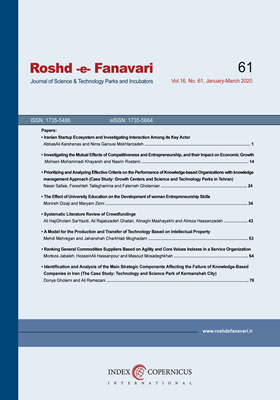-
-
List of Articles
-
Open Access Article
1 - The Role of Organizational Capabilities in Reducing Technological Risks and Improving the Market Performance of Knowledge Companies by Mediating role of Technology Intelligence
Mohammad hataminejad Mohsen Akbari Mostafa Ebrahim pour Azbary -
Open Access Article
2 - The Participation of Humanities Universities in Cycle of Theorizing And the Role of Humanities Incubators
mohammad hassan hassani -
Open Access Article
3 - Learners Assessment Tools in E-Learning
hamed abbasi kasani gholamreza shams mourkani farhad seraji morteza rezaeezadeh -
Open Access Article
4 - Identifying the Factors Affecting Technological Learning in Developing Countries
Nasrin Dastranj -
Open Access Article
5 - Investigating the Effect of Cloud Computing on the e-Health System
Mohsen Gharakhani Seyedeh OmSalameh pourhashemi -
Open Access Article
6 - Smart Contract Technology, Evolution in the Development of E-Commerce: Requirements and Policies
Mohsen Sadeghi Mahdi Naser -
Open Access Article
7 - The Effect of Domain Specific Innovativeness on Exploratory Purchasing Behavior in Innovative Products
alireza khorakian Mona Kardani malekinezhad Fariborz Rahimnia
-
The rights to this website are owned by the Raimag Press Management System.
Copyright © 2017-2025







